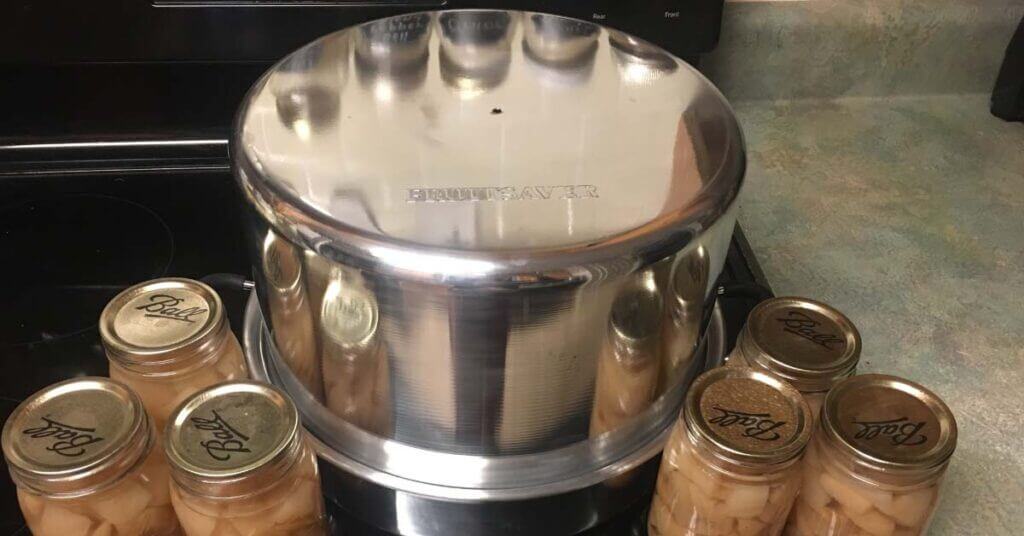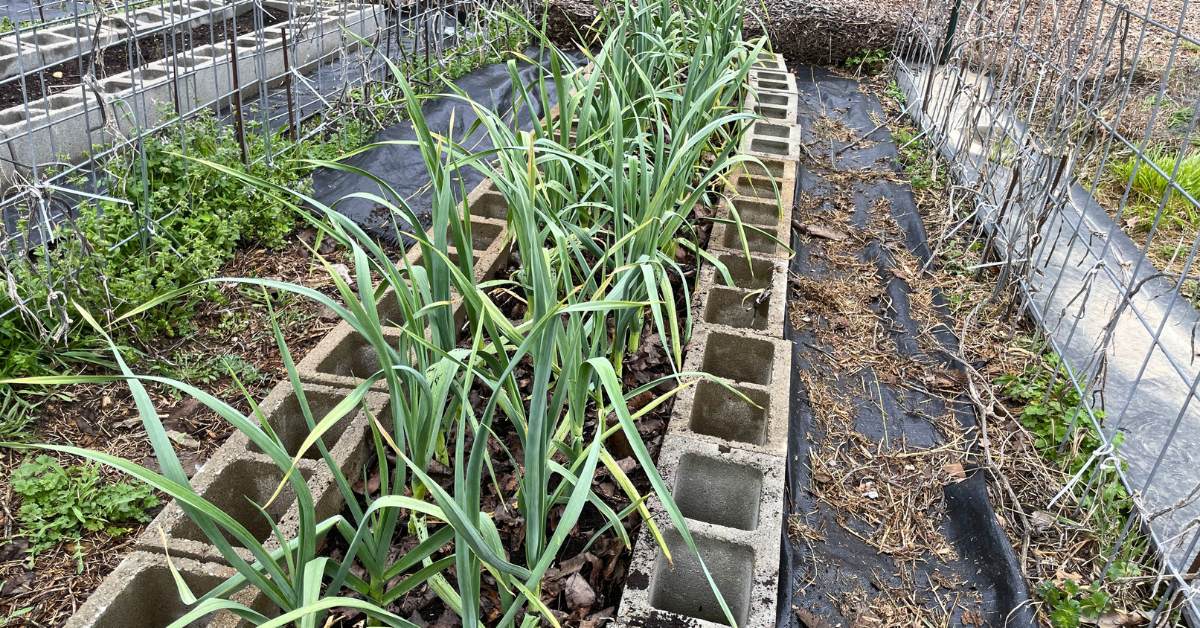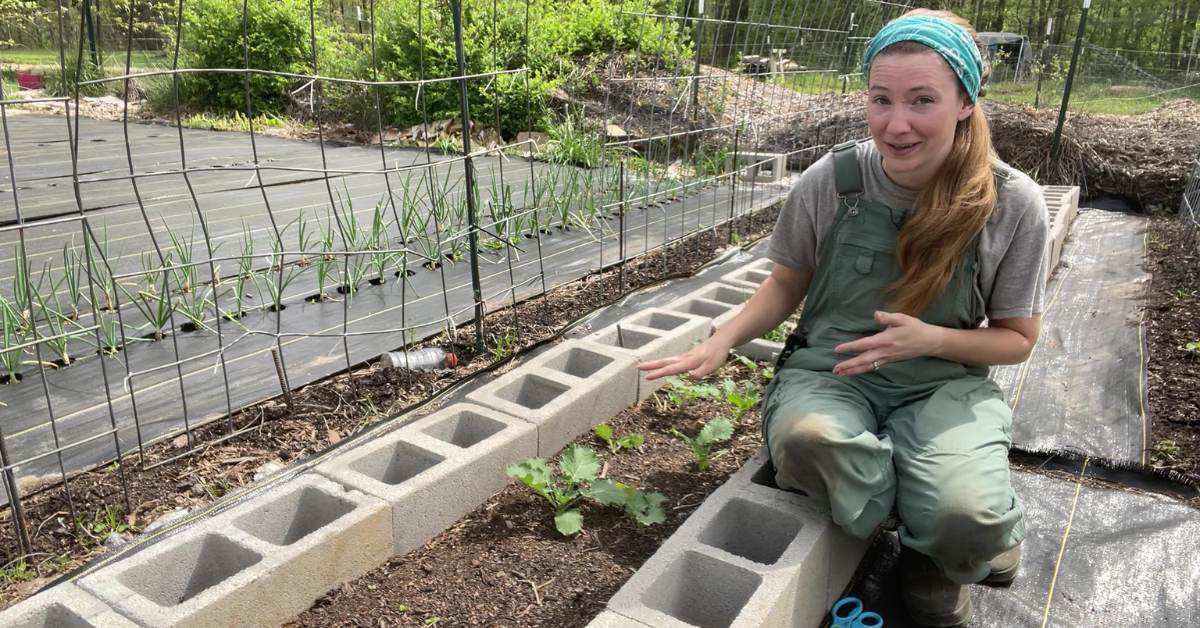If you’ve used a water bath canner for long, you’re well aware of its drawbacks. Sure, it’s a tried-and-true way to put up tasty homemade jams, jellies, and pickles. But it takes lotsa lotsa lotsa – lotsa water, lotsa time, and lotsa fuel.
And boy, do those pots get heavy!
Today we’re going to talk about an alternative way to preserve your homemade treats—steam canning. I’ll show you why I use it, and I’ll help you find the best steam canner to get you hooked on this less intense way to preserve food.
Are Steam Canners an Approved Canning Method?
Before we start, let’s address that elephant in the room.
You heard that steam canners aren’t an approved canning method, right?
Well, until recently, they weren’t. But don’t worry—reports besmirching the safety of steam canners are now outdated.
In 2015, the University of Wisconsin published findings that canning with an atmospheric steam canner is just as safe as using the water bath method in many situations.
As long as the food being preserved is acidic enough and certain guidelines and procedures are carefully followed, it is now considered safe to can foods using a steam canner.
In other words, it is “officially approved” (if you care about that sort of thing).
How Steam Canners Work
So, what exactly is steam bath canning and how does a steam canner work?
First of all, steam bath canning (also referred to as atmospheric steam bath canning) is not to be confused with steam pressure canning a.k.a. pressure canning.
There is no pressure involved in steam canning, and it’s not a substitute for pressure canning.
Steam canning is a method used to preserve acidic foods in glass jars, using continuous steam to maintain a high temperature for a specified amount of time.
Steam canners work by boiling water and creating steam that heats the contents of jars placed inside.
After the food is exposed to heat long enough, the jars are sterilized, oxygen is removed, and the lids vacuum seal. This makes the food within shelf stable.
Steam Canning Vs Water Bath
If that description sounds familiar, it’s because steam bath canning is a really close cousin to water bath canning. So close that some steam canners also work as water bath canners.
Like canning with a steamer, water bath canning also preserves food in jars by using heat to preserve their contents. However, in water bath canning, you submerge the jars in boiling water.
In steam canning, you submit them to steam to do the same job.
Both water bath canning and steam bath canning are acceptable for highly acidic food under controlled circumstances.
Again, neither are a substitute for pressure canning, which is the only safe way to can foods with a pH above 4.6, such as meat, veggies, and more alkaline fruits.
Steam canning is the preferred option for some of the same foods that are safe to water bath can because it saves water. And because it saves water, it cuts down on energy and time, since less water takes less fuel and less time to boil.
When it comes to using water, time, and energy, I’m sure you’ll agree that “less less less” beats “lotsa lotsa lotsa.”
However, there are some differences between steam canning and using a water bath canner.
Because the steam must be consistent, you can’t refill the water in a steam canner if it boils (or evaporates) out.
With a water bath canner, you can add more boiling water from a nearby kettle.
With a steam canner, you must not remove the lid to add water, even if it’s boiling water, or you’ll be forced to start over.
Because of this, it’s not recommended to steam can anything that needs more than 45 minutes of processing.
It’s also necessary to hot pack your jars when you steam can and always be mindful of the elevation of your location.
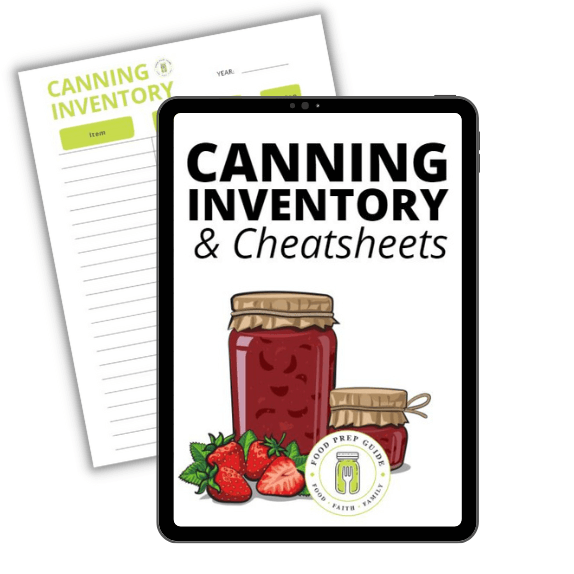
Choosing the Best Steam Canner for You
To find the best steam canner to meet your needs, consider several factors:
Not only will you need to know how much food you’ll be canning at one time and what size pot you’re comfortable working with, you also want to take the type of stovetop you’re using into account.
Your canning steamer pot will need to fit properly on your burners and be able to safely convert burner heat or magnetic induction waves into consistent heat.
The shape of the bottom of a steam canner pot is also important since each type fits a different type of burner.
Elevation will affect the point at which the boiling water turns to steam, so a gauge that clearly indicates whether you’re in the proper temperature range for your location is critical.
A temperature indicator is much more reliable than guessing whether the level of steam is sufficient to safely preserve your food. Gauges help a lot!
Another factor is the space you have available to store your steam canner.
If space is at a premium, look at a steam bath canner that does double (or even triple-duty) as a water canner.
And, of course, your budget is a major factor.
Our Pick for Best Steam Canner: Victorio
So, what’s our pick for the best steam canner? Drum roll please…
Our favorite steam canner is made by Victorio also known as the Kitchen Crop by VKP Brands.
It’s a budget-friendly option that fits well on most cooktops and conducts heat properly (for non-induction ranges).
- NO GUESSWORK TIMING: The lid’s unique built-in Temperature Indicator eliminates guesswork – just start timing when the needle hits your elevation’s green zone
- TIME SAVER: Aluminum construction ensures quick heat-up and cool-down times. Smaller water requirements also ensure quicker processing. It cuts preheating time by 50% compared to water bath canning.
- RIGHT CAPACITY: Can process up to 7 quart or 8 pint jars of high-acid foods at one time. Note: will NOT accommodate half gallon jars.
- EASY AND SAFE: Lightweight design, lower water capacity requirement, and cool-touch handles. Uses 80% less water than traditional water bath canning.
- 5 YEAR WARRA
Prices pulled from the Amazon Product Advertising API on:
Product prices and availability are accurate as of the date/time indicated and are subject to change. Any price and availability information displayed on [relevant Amazon Site(s), as applicable] at the time of purchase will apply to the purchase of this product.
It’s aluminum, so it’s lightweight and will heat up and cool off fast.
Its small size makes it ideal for kitchens lacking storage.
Features
If you have a glass stovetop, you’ll also be happy to know that the Victorio is an option that works well on a glass stove. A steam canner for glass top stove use must be flat-bottomed and lightweight.
Disclaimer: I personally use this model on my glass stove top—as do many others. But, technically, it is not “certified” for glass-top stoves.
The Victorio’s light construction makes it less awkward to move, so there’s less chance of scratching the stove by dragging it. There’s also less of a chance that it will overload and crack the glass as it rests on the burner.
(There we go with “less less less” again!)
Of course, you’ll need to double-check with your stovetop manufacturer to make sure this pot is appropriate, but it should work well with most glass top stoves.
One of the best features of this canner is the gauge in the lid to ensure the temperature stays in the right range.
While it may be tempting to run the pot at a full boil the entire time, it really needs to be kept at the proper temperature for your elevation and no more.
This keeps the water from boiling out or producing a huge cloud of steam that moves the lid and disrupts the process, while maintaining a nonstop flow of steam.
Having a temperature gauge and a solid idea of where to keep the temperature needle is invaluable to this process and much more accurate than just keeping an eye on the steam vents.
A Note About Steam Canner Processing Times
As we said above, it’s not recommended to use recipes that require more than 45 minutes of processing time because the water can boil out of the steam canner.
When following a recipe, make sure it’s a modern, well-tested recipe from a trusted source such as the National Center for Food Preservation.
If it is, then you can use the same steam canning times as the recommended water bath canning times.
Follow the recipe the same way as for the water bath, but be sure to hot pack the jars and keep a good column of steam venting during the entire time you’re processing the food.
Just as you don’t start timing until your water bath reaches a rolling boil, you don’t begin timing with a steam canner until the gauge is in the proper range for your elevation.
If you’ve been afraid to use a steam canner because of its unfamiliarity, I encourage you to revisit this option. Steam bath canning has been shown to be safe if you follow procedures and use well-made equipment.
This type of canning saves time and water and energy, and who doesn’t want to save any and all of those nowadays?
I love my Kitchen Crop:
Prices pulled from the Amazon Product Advertising API on:
Product prices and availability are accurate as of the date/time indicated and are subject to change. Any price and availability information displayed on [relevant Amazon Site(s), as applicable] at the time of purchase will apply to the purchase of this product.
Once you find the best steam canner for your needs and give it a go, you’ll be surprised how much more you look forward to cranking out “lotsa” wonderful jams and jellies!
FREE FOOD STORAGE PLAN!
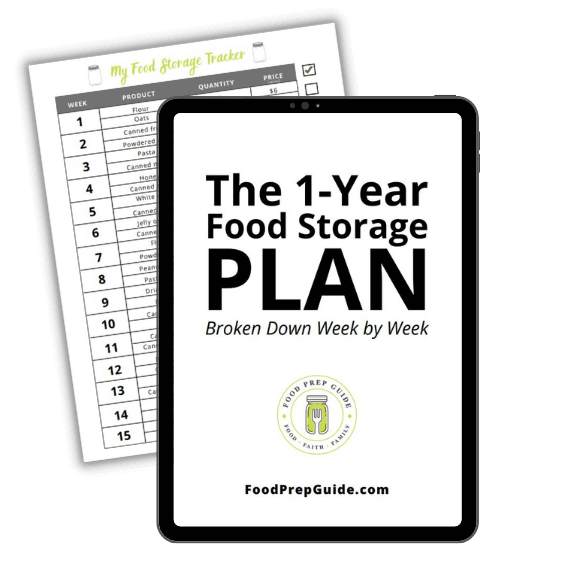
Does gathering and storing a year’s worth of food for your family seem overwhelming and unachievable?
Make it easy with our step-by-step plan. Subscribe to our weekly newsletter & we’ll send it to you FREE!


